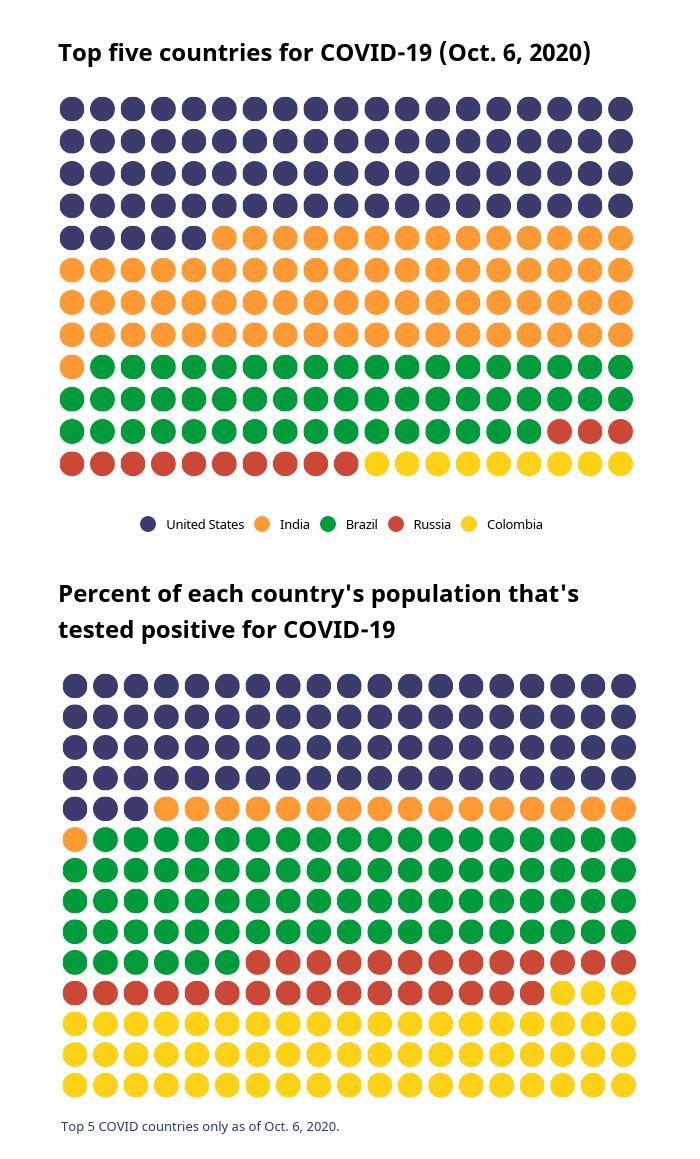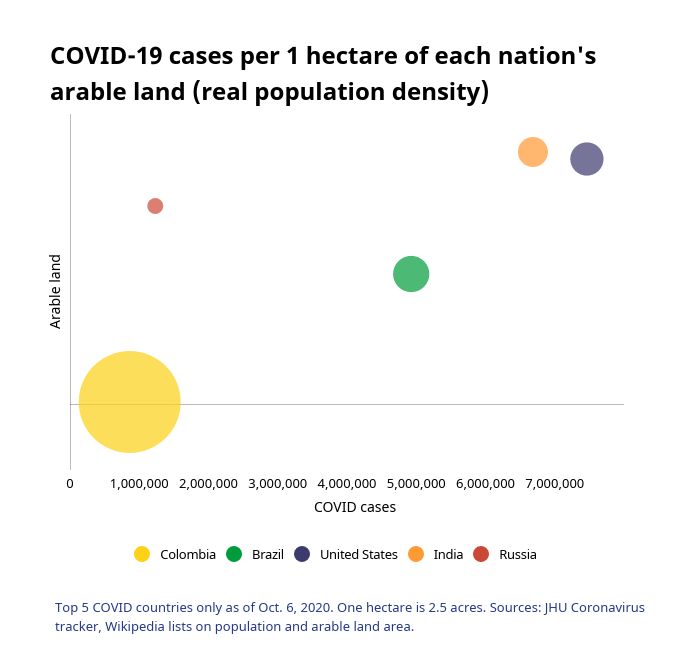The World Health Organization's Tedros Adhanom Ghebreyesus cautioned the world yesterday to consider the unevenness of the global COVID-19 pandemic.
Coronavirus cases topped 35.6 million as of Tuesday, with the top 5 nations - The U.S., India, Brazil, Russia, and Colombia - make up 60% of the world's total.
But when considering population density, Colombia stands in stark contrast. Here's how:

Colombia has a population of just over 50 million people, but compared to the other top COVID-19 countries, it has the highest real population density.
Population density is when you look at the number of people compared to its land area. However a country might have a lot of land, but much of it could be desert which would be uninhabitable.
Real population density is the population density of a country when you take into consideration land you can farm on, defined as arable land.
When we use this measurement, we find that for every hectare of arable land in Colombia, there were .5 coronavirus cases - far higher than any of the top ten COVID-19 nations.
A hectare is about the same as 2.5 acres of land. In the United State for example, the number of COVID cases per hectare of arable land was .09. In India, it was .04 and in Brazil, it was .06.
When looking at the top ten COVID nations, there are other nations facing a similar predicament such as Peru, which has nearly 830,000 cases and .24 COVID-19 cases per hectare of arable land

After months of lockdown, Colombia has begun a phased loosening of restrictions such as dining at restaurants.
While COVID-19 cases in Colombia have fallen significantly since August, the daily cases have risen in the last few days, and leaders such as Epidemiologist Luis Hernandez and Bogota Mayor Claudia Lopez warn that the country could face a second outbreak in November.
Check out The China Report, our new weekly newsletter. Subscribe here!